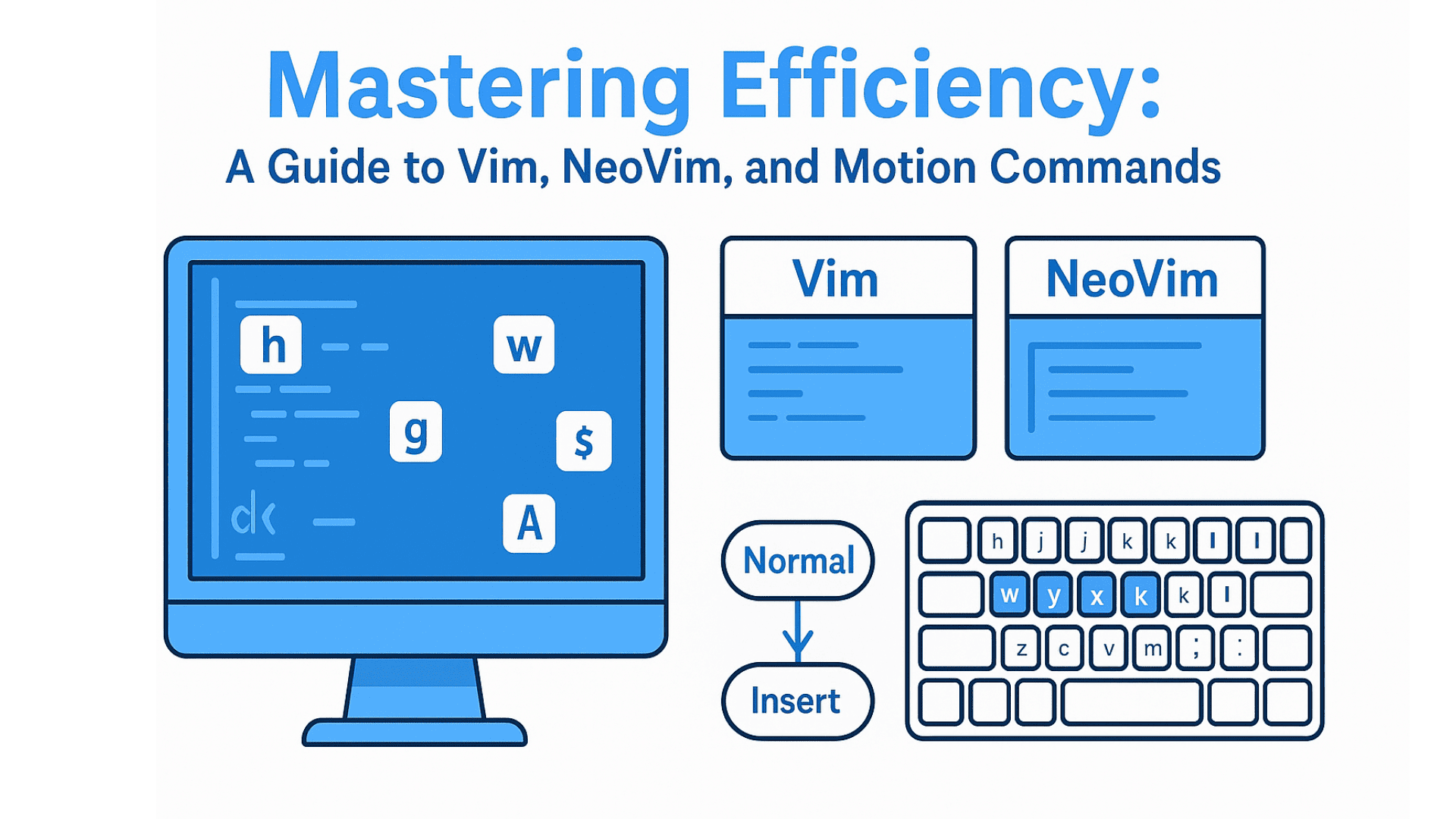Text editors have come a long way from the early days of simple command-line tools. Among the most enduring and powerful is Vim, a text editor that has shaped the workflows of developers, writers, and sysadmins for decades. Its modern counterpart, NeoVim, builds on Vim’s legacy while embracing new features and improved performance. If you’re looking to unlock faster, more intuitive editing workflows, understanding Vim and NeoVim—and their motion commands—is a game-changer.
What Is Vim and NeoVim?
Vim (Vi Improved) is a modal editor, meaning it operates in different modes—like Normal mode (for navigation and commands), Insert mode (for typing), and Command mode (for executing complex operations). This design prioritizes speed, allowing users to edit text without switching between the keyboard and mouse.
NeoVim is a fork of Vim, developed to modernize its codebase while preserving compatibility with existing plugins and configurations. It introduces features like asynchronous operations, improved scripting support, and a more modular architecture. Think of NeoVim as Vim 2.0: the same powerful engine, but with smoother performance and a more flexible ecosystem.
Both editors are lightweight, cross-platform, and designed to work in terminals—making them ideal for coding on remote servers or within development environments like VS Code, JetBrains IDEs (with plugins), and even Docker containers.
Why Use Vim or NeoVim?
Vim and NeoVim aren’t just for hardcore hackers—they’re tools that can transform how you interact with text. Here’s why they stand out:
-
Speed
Vim’s modal interface lets you move, delete, and edit text with minimal keystrokes. Imagine navigating a file using justh,j,k, andl(like an arrow key) while editing withd,x, orc. It’s a dance of precision. -
Customization
Both editors support plugins, themes, and custom keybindings. With a plugin manager like vim-plug or packer.nvim, you can tailor Vim to match your workflow—whether it’s syntax highlighting, auto-completion, or integration with version control systems. -
Unmatched Portability
Vim has been around since the early 1980s, and NeoVim is built to carry that legacy forward. Whether you’re coding in a terminal or using an IDE, these editors adapt to your environment without relying on external tools. -
Community and Ecosystem
A vast community has created countless plugins, tutorials, and resources. From auto-saving to AI-powered suggestions (via tools like vim-asterisk), the ecosystem is as dynamic as the editor itself.
Where to Use Vim and NeoVim
These editors aren’t limited to traditional workflows. Here are some modern use cases where they shine:
-
Remote Development
With NeoVim’s support for SSH tunnels and containerized environments, you can code directly on a remote server using a terminal. Pair it with tools like tmux or zsh, and you’ve got a full-featured development setup. -
Writing and Research
Writers and researchers often need to juggle multiple documents. NeoVim’s multi-window support (via split screens) and integration with markdown or LaTeX make it a viable alternative to dedicated writing tools. -
DevOps and Scripting
Sysadmins rely on Vim for editing configuration files, logs, and scripts. Its ability to run commands directly in the editor (like:wq!to force save) makes it a go-to tool for quick fixes. -
IDE Integration
Many IDEs now include Vim-compatible plugins (e.g., VS Code’s Vim extension, PyCharm’s built-in support). This lets you blend the efficiency of Vim with the features of a modern IDE.
Top Keybindings to Master
Getting started with Vim or NeoVim requires learning a few core commands. Here are the essential ones to make you productive:
-
Navigation
h,j,k,l: Move left, down, up, right.w/W: Move to the start of a word (small/large).e/E: Move to the end of a word.$: Jump to the end of the line.
-
Editing
x/X: Delete a character (left/right).dd/D: Delete a line.ciw/caw: Change inside/outside a word.
-
Search and Replace
/pattern/?pattern: Search forward/backward.:s/pattern/replacement/g(global replace).
-
Saving and Quitting
:w/:W: Save the file.:q/:Q/:wq: Quit normally, without saving, or save and quit.
-
Motion + Action
Combine motions with actions (e.g.,d$to delete from cursor to end of line). This is where Vim’s power lies.
Suggestions for Images
To enhance readability, consider adding these visual elements:
- A screenshot of Vim’s interface in Normal mode, highlighting key commands like
h,j, andw. - A split-screen comparison of Vim (left) and NeoVim (right), showing their similar but distinct features.
- A flowchart or diagram illustrating Vim’s modal interface (Normal, Insert, Command modes).
- A keyboard layout with highlighted keybindings for navigation and editing.
- A terminal window showing NeoVim in action, with a split view for editing code and viewing logs.
Conclusion
Vim and NeoVim are more than just editors—they’re tools that encourage a deeper relationship with your text. By mastering motion commands and customizing your workflow, you’ll find yourself editing faster, with fewer distractions. Whether you’re a developer, writer, or sysadmin, the time invested in learning Vim pays off in efficiency and control.
Start small: pick one keybinding, practice it daily, and let the muscle memory take over. Before you know it, you’ll be moving through files like a pro—without ever touching the mouse.



